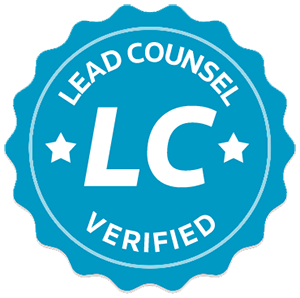 Claims of domestic violence and other issues of marital misconduct are not uncommon in divorce cases in Nassau and Suffolk counties on Long Island, NY. The question debated among many divorce lawyers and other groups in the legal field is whether claims of marital misconduct should be handled within a divorce action or whether the aggrieved should file a separate tort action to recover damages for injuries.
Claims of domestic violence and other issues of marital misconduct are not uncommon in divorce cases in Nassau and Suffolk counties on Long Island, NY. The question debated among many divorce lawyers and other groups in the legal field is whether claims of marital misconduct should be handled within a divorce action or whether the aggrieved should file a separate tort action to recover damages for injuries.
Inter-Spousal Immunity No Longer Recognized in New York
Until the mid 1900s, many states recognized a legal standard of Inter-Spousal Immunity, which provided that spouses could not sue one another for alleged misconduct during the course of a marriage. Today, the doctrine of Inter-Spousal Immunity is no longer recognized as a valid legal theory.
No-Fault Divorce Replaces Fault Divorce in New York
In addition to the eradication of inter-spousal immunity, most states, including New York, have introduced the use of No-Fault Divorce, replacing the traditional practice of granting divorces upon a court finding of fault. These two shifts in legal standards have posed considerable problems for parties seeking redress for marital misconduct.
No-Fault Divorce Proponents Argue Abuse Should Be Taken Out of Divorce
Proponents of No-Fault Divorce reject the notion that tortious conduct, such as claims of abuse, should be addressed during divorce proceedings, since they would undoubtedly assign fault to one of the parties involved in the litigation. Under a Fault-based divorce regime, however, the finding of tortious conduct committed by one party during litigation remained a nonissue, as it served as a component to a divorce proceeding in the past. Consequently, many in the field of Family Law believe that alleged acts of marital misconduct should be filed in separate tort law claims to preserve the integrity of no-fault divorce.
Marital Misconduct Can Affect Equitable Distribution in Divorce …
While New York remains a No-Fault Divorce state, courts will entertain claims of marital misconduct in consideration of equitable distribution in divorce. In the case, Havell v. Islam, the court entertained the allegations of domestic violence in the equitable distribution of marital property. In that case the plaintiff alleged that the defendant, her husband, engaged in abusive behavior throughout their twenty-one year marriage. When the plaintiff informed her husband of her intention to file for divorce, the defendant beat her mercilessly, resulting in severe injuries, which required extensive surgeries and multiple medical procedures. In the consideration of the equitable distribution of marital assets, the court awarded the plaintiff 95.5% of the property in compensation for her injuries. The court’s holding is an example of one way an injured party may seek damages for marital misconduct, but it is not the only way.
… But Not Always
In Hakikkla v. Hakikkla, a New Mexico case, the parties had already divorced when the plaintiff filed a tort action against her former husband for the intentional infliction of emotional distress. The defendant had committed various acts of abuse throughout the marriage, both verbal and physical, however, the court dismissed the claim, finding that the conduct did not rise to the level of outrageous behavior. Due to New Mexico’s no-fault divorce laws, the court declined to associate the tort claim with the facts alleged during the divorce action. Although the plaintiff did not prevail under this particular set of facts, the case demonstrates that tort actions for marital misconduct serve as an alternative to seeking redress in a divorce proceeding.
How to Redress Marital Misconduct? In Divorce or Out?
So, which way of seeking redress for marital misconduct is the appropriate method? The American Law Institute (ALI) recommends that claims of adultery, cruelty and abandonment are non-legitimate issues to be entertained during the course of a divorce proceeding. Essentially, a divorce action should merely serve to consider the distribution of marital assets and nothing else. The ALI further rationalizes that victims of marital misconduct have other outlets available to them to adequately address their claims, including the criminal justice system and tort law.
Issues with Tort and Criminal Law as Remedy
While Tort Law and Criminal Law may seem like they offer the appropriate remedies for those seeking damages, there are potential problems associated with the inability of victims to bring tortious claims in a divorce action. One problem is that civil claims are subject to a statute of limitations. Many victims of abuse who are in the process of getting divorced are reluctant to bring a tort action against their abusers before their divorce has been granted. Some states however, have changed their tort laws regarding statutes of limitations to accommodate for instances of domestic violence. Another problem associated with commencing multiple lawsuits is that it is both more expensive and less efficient than courts hearing multiple claims at once. There is also the fear that certain claims previously litigated in one suit will be barred from relitigation in another suit.
No Easy Answers for Long Island NY Divorce
All of these factors make it extremely difficult to determine whether claims of marital misconduct should be entertained in divorce proceedings. While it is important to preserve the integrity of no-fault divorce, victims of tortious acts should have the ability to fairly and efficiently litigate their claims.
Contact Us for More Information in Nassau, Suffolk, Long Island, NY
Do you have questions about Divorce Law on Long Island? Contact us today by calling 631-923-1910 or filling out the short form on this page for a free, complimentary consultation where we can discuss the issues involved in your individual case.
For more information about Divorce on Long Island, visit this page: Divorce Lawyers Answer Questions about Long Island Divorce












